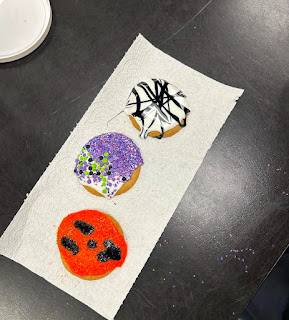The 2013 Chinese New Year will fall on Sunday, February 10. It is considered by many to be the most important of traditional Chinese holidays. It is also the longest lasting festivity. In China, it is known as the Spring Festival.
According to Chinese mythology, the beginning of the Chinese New Year started because of a mythical beast, Nian. On the first day of the New Year, Nian would terrorize the villagers by eating the livestock, crops, and even villagers. As protection, villagers put food out on their doorsteps and once Nian ate the food, he would not attack. Once, the villagers saw Nian being scared of a child wearing red, and they concluded that the beast was scared of the color. Since then, they’ve hung red lanterns and also lit firecrackers to scare the beast away.
Today, Chinese New Year is “just a symbol for spring coming,” said an anonymous junior.
For junior WeiWei Chen, Chinese New Year is “a day of festivity, family, fireworks, and of course, ‘red packets’ filled with money to welcome the new year.”
Traditions vary from region to region. Of course, families spend the holiday together and the celebration is filled with socializing, eating, and merriment. Red clothes are worn, and clothes are usually all new to symbolize a new year and a fresh start. Flowers are sometimes used to decorate. For example, sunflowers are used because they signify a good year.
Chen, who was born and grew up in China before moving to the United States, described the traditions her family engages in. “It used to be that my entire family (extended family included) and I would go to a New Year’s part at the Orientation Market Plaza, have dinner with a bunch of friends, and watch the dragon dance show.”
Dragon and even lion dances are common during Chinese New Year. It is believed that the loudness of the drums beating and the sounds of the symbols keep away bad spirits. Senior Arshia Badakhshan said, “I went to a Chinese New Year celebration last year that was hosted by an organization called OCPA. The celebration was held in a huge auditorium.” Badakhshan added that there were many people dressed up in traditional clothing. He explained that they danced to the jing-ju song as part of the celebration.
The anonymous junior said that her family celebrated by watching the New Years show. Then, her parents give her a red pouch with money as part of the tradition. “Also, for the Chinese community there is a show that is put on at a local high school,” she added.
Chen’s family also engages in the tradition of money-giving. “The kids get money in red envelopes on New Year’s and that’s where I get my allowance for the year,” she explained.
“Back in China, the celebrations were much grander and dragon dances, parades, lanterns and the smell and sound of firecrackers filled the streets.” she added. While the holiday isn’t celebrated as elaborately inAmericais it is inChina, Chinese New Year anywhere is a holiday that is rich in tradition and history.























